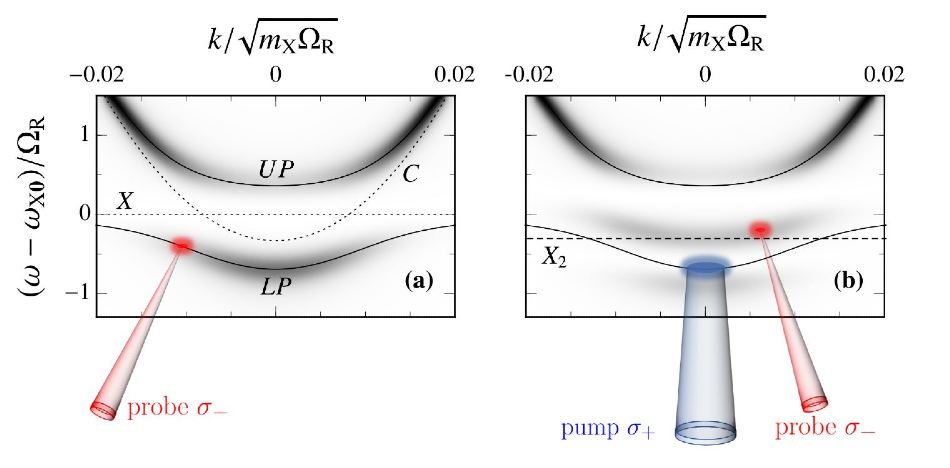Apr 28 2020
A study, headed by Monash University, has devised a new method to directly visualize the associated, many-body states present in an exciton-polariton system that extends beyond the limitations of the traditional concepts.
 Spectroscopic signature of two-point, many-body correlated state. Left: In absence of pumping. Right: With pumping. Image Credit: FLEET.
Spectroscopic signature of two-point, many-body correlated state. Left: In absence of pumping. Right: With pumping. Image Credit: FLEET.
This study expands the application of quantum impurity theory, which has presently attracted a great deal of interest from the cold-atom physics community, and will prompt forthcoming experiments that would reveal the many-body quantum correlations of microcavity polaritons.
Exploring Quantum Fluids
Exciton-polaritons provide a playground in which one can explore room temperature quantum fluids, and the novel properties of many-body non-equilibrium systems.
Meera Parish, Study Author and Associate Professor, Monash University
But in spite of their inherent quantum nature as superpositions of light and matter, many of the recent outcomes can be explained via the physics of classical, non-linear waves.
The latest research demonstrates how an individual can explore outside the mean-field quantum correlations present in a many-body polariton system via quantum impurity physics, in which a mobile impurity is clad by excitations of a quantum-mechanical medium and thus creates a novel polaronic quasiparticle that challenges a mean-field description.
Observing beyond mean-field quantum correlated behaviour with polaritons is an important milestone toward using polaritons for quantum technologies.
Dr Jesper Levinsen, Study Lead Author and ARC Future Fellow, School of Physics and Astronomy, Monash University
Dr Levinsen is also a collaborator of the Associate Professor Parish at Monash University.
At the few-particle scale, new improvements have been made by accomplishing the weak anti-bunching and polariton blockade within a fiber cavity. Confinement of photons in this fiber cavity improves non-linearities.
In a similar way, intricate multi-dimensional spectroscopy has been applied for studying quantum correlations. But experiments that reveal outside the mean-field quantum correlated behavior at the many-body level continue to be mysterious.
By utilizing pump-probe spectroscopic techniques, which were already established by experiments, the research offers another way to study these quantum correlations.
Our findings match the results of these experiments, but show that experiments have so far missed the regime where multi-point quantum correlations can be seen.
Dr Jesper Levinsen, Study Lead Author and ARC Future Fellow, School of Physics and Astronomy, Monash University
The Study
The study, titled, “Spectroscopic signatures of quantum many-body correlations in polaritons microcavities” was published in the Physical Review Letters journal in December 2019.
In addition to support from the Australian Research Council (Centres of Excellence and Future Fellowship), the study was also funded by the Ministerio de Economia Competitividad (MINECO), the Simons Foundation, and the Engineering and Physical Sciences Research Council (EPSRC). The research was performed at the Aspen Center for Physics.